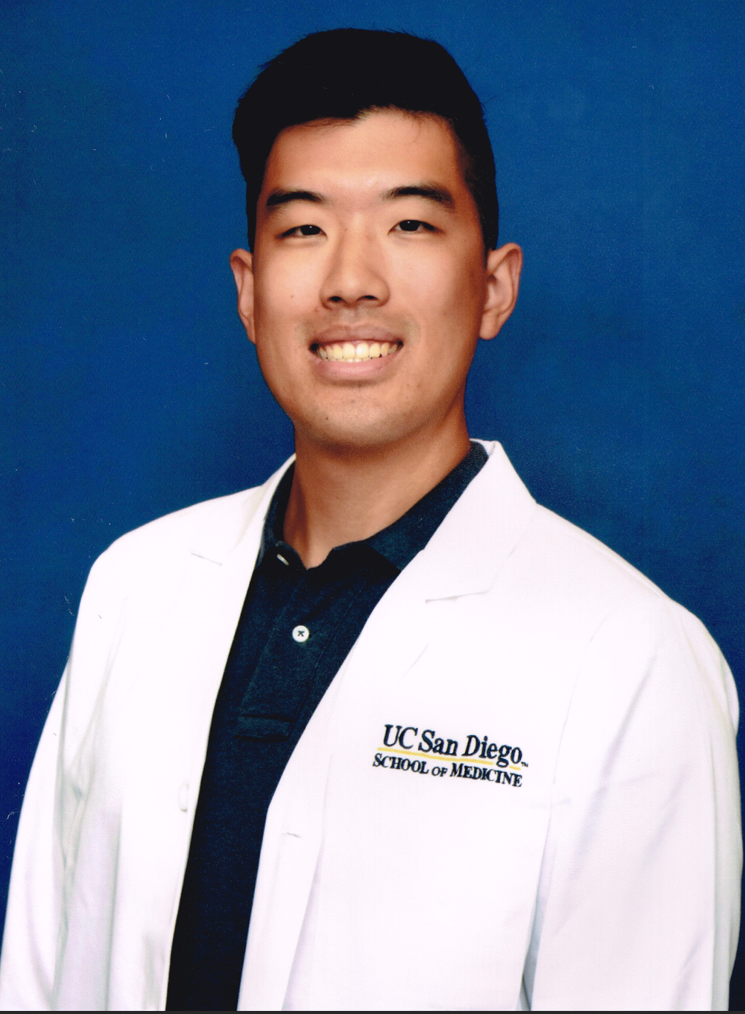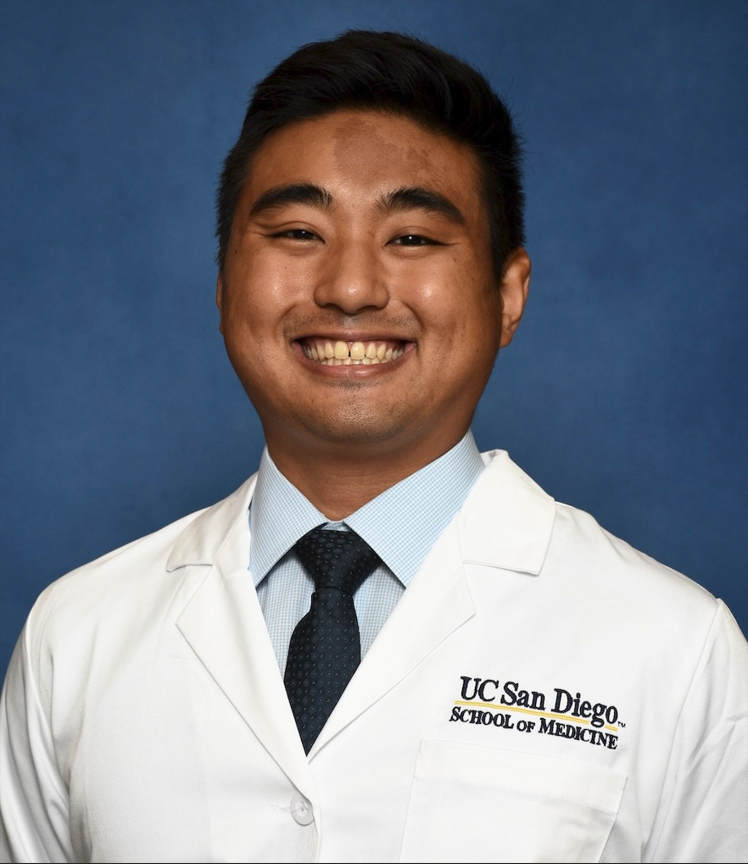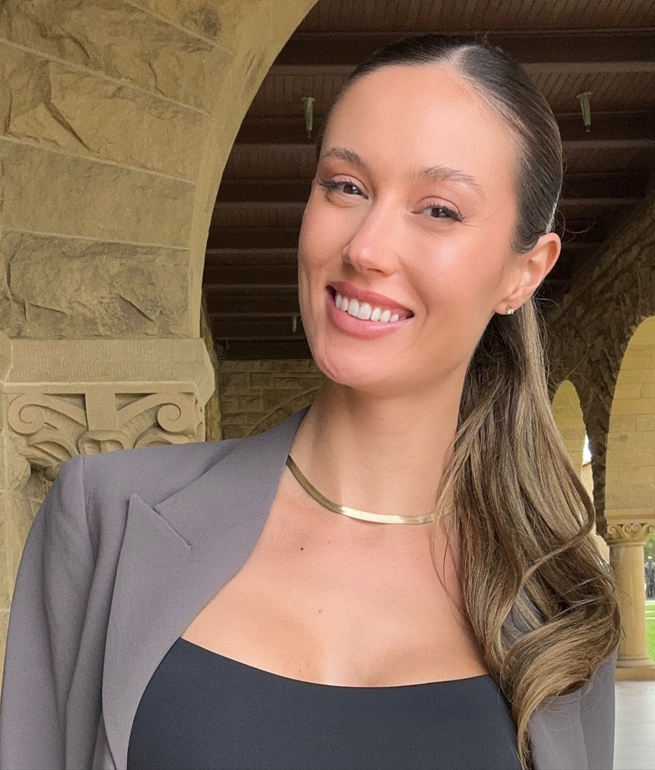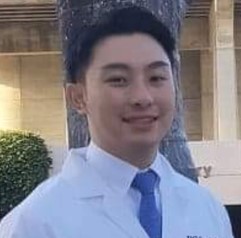MedGap Program
The ACTRI MedGap program is a UCSD School of Medicine institutional award, focused on research projects in medicine for 3rd year medical students, and provides 12 months of career and research development support.
MedGap Current Awardees
Recipients Awarded in 2024

Uyen Nguyen, Medical student
Department of Radiology, Division of Diagnostic Radiology
Mentor: Jeffrey Rudie, MD, PhD
Project Title: Customized 3D Convolutional Neural Networks for Augmenting the Longitudinal Assessment of Vestibular Schwannoma
Abstract:
Despite the advances in artificial intelligence and quantitative imaging, current clinical interpretation of images relies solely on subjective visual review. Even highly trained radiologists are prone to cognitive errors and biases with the growing demand for imaging utilization. Hence, to enhance precision, accuracy and reproductivity of radiologic practice, there is a need to translate advanced, automated, image-processing, machine learning and deep learning methods into clinical practice. Vestibular schwannomas are Schwann cell-derived tumors which originate from the vestibular portion of the vestibulocochlear nerve. Its mass effect on the surrounding tissue results in clinical manifestations of hearing impairment, ataxia, and facial palsy. Vestibular schwannoma is a WHO Grade 1 tumor, and with appropriate therapy options such as stereotactic radiosurgery, the prognosis is generally favorable. However, transient tumor growth is noted in many patients post treatment prior to tumor shrinkage, leading to the need for long-term follow-up of imaging studies to guide clinical interventions. As a result, deep learning-based assessment tools could play an important role in assisting neuroradiologists and radiation oncologists on delivering prompt and accurate assessments relevant for treatment planning. We aim to develop a robust, automated image-processing artificial intelligence platform for sensitive and specific detection and quantification as well as longitudinal follow-up, and quantitative assessment of vestibular schwannoma that can distinguish between growing, stable, and shrinking states.

Daniel Lee, BA Molecular and Cell Biology
Department of Pediatrics, Division of Hematology/Oncology
Mentor: Paula Aristizabal, M.D., M.A.S.
Project Title: Role of Social Determinants of Health on Survival in Children with Acute Lymphoblastic Leukemia: A Retrospective Study at Rady Children’s Hospital San Diego
Abstract:
Cancer remains the leading disease-related cause of death among both children and adolescents in the US. Among the pediatric malignancies, acute lymphoblastic leukemia (ALL) is the most common, representing about a quarter of cancer diagnoses in children under 15 years old. While overall survival for pediatric ALL has steadily improved over the last five decades, disparities in outcomes based on social determinants of health (SDoH) have persisted. The World Health Organization defines SDoH as the conditions and environments in which people are born, live, work, play, worship, and age. These factors include - but are not limited to - socioeconomic status, access to food, house material hardship, and health literacy. We hypothesize that adverse SDoH, including lower socioeconomic status, food insecurity, unstable housing, and limited health literacy will be associated with lower survival and greater mortality for pediatric ALL patients.

Taiki Nishihara, Medical Student
Department of Ophthalmology
Mentor: Natalie A. Afshari, MD
Project Title: Cost Effectiveness Analyses of Emerging Technologies, Therapeutics, and Interventions in Ophthalmology
Abstract:
By 2050, 82 million Americans will be aged 65 and older, accounting for nearly 25% of the total population. This demographic shift poses significant challenges in healthcare costs, especially within ophthalmology, as the prevalence of eye disorders rises with age. In 2018 alone, Medicare disbursed $10.2 billion for age-related macular degeneration, cataracts, diabetic retinopathy, and glaucoma, conditions that nearly half of the Medicare beneficiaries were diagnosed with. These costs are expected to continue to increase with the changing demographics of the U.S. population. While there have been major advancements in technologies and therapeutics to meet this growing demand for vision care, it remains critical to invest in cost-effectiveness research that can empower decision-makers to compare different interventions. With the support of the Med Gap program, we aim to identify high-potential, emerging solutions within ophthalmology and evaluate their overall cost-effectiveness. This study will support an overall effort to ensure more efficient resource allocation and improved patient outcomes.

Ryan W. Sindewald, BS
Department of Neurosurgery
Mentor: David R. Santiago-Dieppa, MD
Project Title: ALARA Principles in Practice: Reducing Frame and Pulse Rates in Pediatric Endovascular Procedures
Abstract:
Since the COVID-19 pandemic, there has been a surge in the number of neuro-endovascular procedures performed by an estimated 35%. Given this dramatic increase, the radiation burden of these procedures must be considered. This effect is magnified in pediatric patients with longer anticipated lifespan who are more susceptible to the harmful effects of radiation. We have previously demonstrated how radiation dosage and exposure can be safely reduced in adult populations. A retrospective review of prospectively acquired data was conducted on Diagnostic Cerebral Angiograms (DCAs) and interventional procedures performed at our institution between January 2021 and December 2023. The radiation protocol used in each procedure was identified. Descriptive statistics and univariate analysis of radiation dosage and exposure between the two protocols were performed. For interventional procedures, due to the common use of roadmap guidance, the sums of dosage and exposure of the angiographic runs was used as opposed to the total radiation dosage and exposure in order to isolate the effects of the new radiation protocol.
18 DCA and 17 Interventional procedures in patients aged 18 and younger at our institution were identified and included in the study. For diagnostic procedures, nine used the old radiation protocol and nine used the new radiation protocol. For interventional procedures, 9 used the old radiation protocol and 8 used the new protocol. Statistically significant differences were observed in total exposure, total dosage, total dosage and exposure per fluoroscopy time, total dosage and exposure per vessel catheterized, and total dosage and exposure per angiographic run in diagnostic procedures. No statistically significant difference was observed in patient age, the number of vessels catheterized, fluoroscopy time, and number of runs. For interventional procedures, statistically significant differences were found in dosage and exposure per fluoroscopy time and dosage per angiographic run. Radiation dosage and exposure can be safely reduced in DCAs in pediatric populations, while interventional procedures in pediatric populations are uniquely resistant to typical radiation reduction methods.

Nicollette Pepin, BS
Department of Dermatology
Mentor: George K. Hightower, MD, PhD
Project title: Human Skin Commensal as Bacteriotherapy to Treat Atopic Dermatitis
Abstract:
Atopic dermatitis (AD) has a high prevalence in the United States, affecting 7.2% of adults and 6%-13% of children. Imbalance of the microbiome, called ‘dysbiosis’, has been proposed to contribute to the pathogenesis of several skin diseases, and investigations of AD provide strong evidence for the importance of cutaneous bacteria in skin health. We aim to improve the treatment of AD by advancing therapy alternatives to classical approaches that utilize antibiotics and topical corticosteroids. Investigational studies of treatments that target the skin microbiome are compelling but have focused almost exclusively on adult skin. This, combined with the fact that AD typically affects children, highlights the importance of this study’s aim to develop therapeutic approaches specifically tailored to the microbiome of pediatric patients.
MedGap Past Awardees
Recipients Awarded in 2023

Niloofar Radgoudarzi, Medical student
Department of Ophthalmology
Mentor: Sally Baxter, MD, MSc
Project title: Analyzing data standards gaps and disparities in demographics and comorbidities in patients with diabetic retinopathy across University of California
Abstract: There are several gaps in standards in ophthalmology, including relatively low adoption of imaging standards, lack of use cases for integrating applications providing AI-based decision support, lack of common data models to harmonize big data repositories, and no standards regarding interfaces and algorithmic outputs. Diabetes affects 34.2 million people in the United States and is the leading cause of preventable blindness among working-age adults. Approximately 30% of U.S. adults with diabetes are affected by diabetic retinopathy (DR). Therefore, having an DR AI/ML-ready dataset will enable downstream AI applications. Our goal is to analyze the gaps in the current DM-related ocular data standards representation and examine the disparities and visual outcomes for DM patients across University of California.

Alexander Lieu, BS
Department of Ophthalmology, Division of Cornea and Refractive Surgery
Mentor: Natalie A. Afshari, MD
Project Title: Impact and Prevention of Smoking-Induced Oxidative Stress on Cataract Development
Abstract: Smoking has been robustly associated with increased incidence and accelerated progression of cataracts. However, molecular pathophysiology of cataracts is not well understood, and the current knowledge of the effects of cigarette smoke on the transcriptome of lens epithelial cells is limited. We aim to elucidate the transcriptomic changes of cigarette smoke compounds, such as hydroquinone and acrolein, on lens epithelial cells. Furthermore, we aim to identify compounds with the potential to either prevent cataract development or dampen the effects of oxidative stress secondary to smoking. Our research will serve as a launch point for the development of non-surgical cataract treatments.
 Danny Lee, Medical Student
Danny Lee, Medical StudentDepartment of Dermatology, Division of Pediatric Dermatology
Mentor: Dawn Eichenfield, M.D., Ph.D.
Project Title: Multimodal Approach of Beta-Blockers and Laser Treatment for Ulcerated Infantile Hemangiomas
Abstract: Infantile hemangiomas are benign vascular tumors of childhood. Ulceration is a common complication that places significant morbidity, including bleeding, pain, infection risk, scarring, and functional impairment. Even with appropriate treatment, they may heal poorly. While there have been many studies examining the management of hemangiomas, few studies have focused on ulcerated infantile hemangiomas. There are no uniform clinical guidelines for efficacious resolution with the myriad of treatment options, such as beta-blockers, pulsed dye laser, antibiotics, and corticosteroids. This project will involve first performing a systematic literature review on the efficacy of beta-blockers and laser treatment on ulcerated infantile hemangiomas. A retrospective study will also be performed exploring treatment modalities used in patients at Rady Children's Division of Dermatology.
 Sarah Alsamman, Medical Student
Sarah Alsamman, Medical StudentDepartment of Obstetrics and Gynecology
Mentor: Sheila Mody, MD MPH
Project Title: Barriers to postpartum health and opinions on a postpartum peer navigator program amongst refugee women resettled in California
Abstract: Postpartum care is critical for maternal mental and physical health and serves as a bridge to long-term engagement with the health system. However, 30% of women in the US do not receive postpartum care. Patients who have been forcibly displaced are at increased risk for maternal morbidity and postpartum depression. Postpartum care is a missed opportunity to improve long-term maternal health in this vulnerable population. Postpartum peer navigation is an effective tool for improving postpartum outcomes. However, no studies have directly engaged refugee women the type of postpartum support they perceive as useful and the needs they need addressed through a peer navigator program. This study explores the postpartum experiences of refugee women and assess their interest in and opinions on a postpartum peer navigator program.
 Kurt Pianka, BS Biomedical Engineering
Kurt Pianka, BS Biomedical EngineeringDepartment of Radiology, Division of Interventional Radiology
Mentors: Claude Sirlin, MD; Kathryn Fowler, MD; Zachary Berman, MD
Project Title: Optimization and Evaluation of Image Registration Subtraction Algorithm for Assessing Treatment Response to Locoregional Therapy in Primary Liver Tumors
Abstract: Primary liver cancer is the 6th most commonly diagnosed cancer but the 3rd most common cause of cancer-related deaths. The majority of primary liver tumors (75 – 85%) are hepatocellular carcinomas (HCC). Transarterial radioembolization (TARE) plays a key role in the HCC treatment paradigm for liver-confined disease, as a bridge to transplant, and for tumor downstaging. The Liver Reporting and Data System (LI-RADS) treatment response algorithm (LR-TR) is used to categorize tumor response to locoregional therapies like TARE. However, TARE can create enhancement artifacts that complicate LR-TR categorization. Strategies to overcome this include the use of image subtraction, though this can be ineffective because structures may not align across series due to patient movement. Convolutional neural network (CNN) based image registration can generate deformable registration that is based on anatomic structures rather than simple table position. We hypothesize that a CNN-based approach will improve reader agreement and confidence in assessing viability following TARE Y90 therapy compared to standard scanner-generated subtractions. In addition, the use of a CNN based approach may lead to improved accuracy of LR-TR categorization.
 Shamilka Seneviratne, Medical Student
Shamilka Seneviratne, Medical StudentDepartment of Psychiatry, Sanford Institute of Empathy and Compassion
Faculty Mentor: Lisa Eyler, PhD
Project Title: The impact of longitudinal mental health curriculum on medical students’ compassion and empathy and burnout rates in the urgent care physician population
Abstract: Access to mental health resources has been limited for youth, with many youth often using their local urgent cares as their first point of contact. At Mid-City Community Clinic’s pediatric urgent care, the pediatricians often cannot perform in-depth visits for patients coming in with mental health concerns, and these patients are often lost to follow up. This project will focus on providing in-depth follow-up for these patients to address their mental health concerns. We are building a longitudinal program for the medical school that will expose medical students to interdisciplinary care, mental health resources in the San Diego community, and medical experience in a psychiatric setting, while developing skills of navigating conversations surrounding mental health and providing trauma informed care. We will study how this program affects the empathy and compassion in medical students and how the program affects the burnout rate of the urgent care providers.